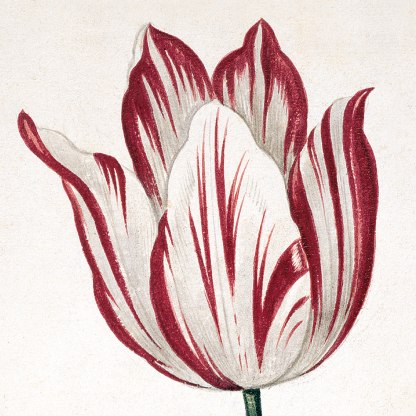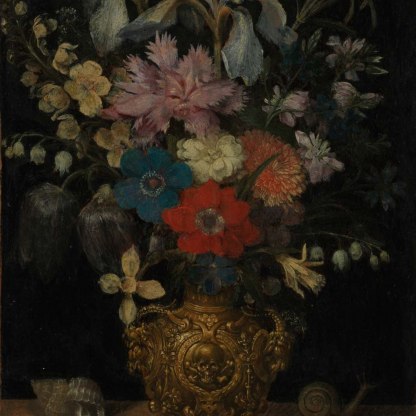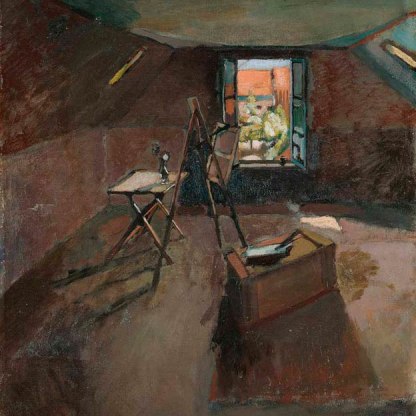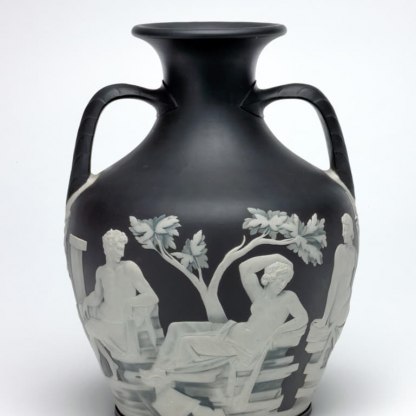A Vase of Flowers

Jan Brueghel I was an exceptionally versatile artist. A painter of landscapes, of history paintings, and of allegorical and mythological scenes, he was also one of the earliest northern European flower painters. His work was to have an impact upon this genre that lasted well into the nineteenth century.
Flower paintings, indeed still-life painting generally, often carried ideas of impermanence, of the transience of life and riches. Here the diamonds and pearls, lying casually beside the vase, hint at one possible meaning of the painting: earthly riches are as evanescent as the bloom of a flower. As the Epistle of James says, 1, 11:
... the sun is no sooner risen with a burning heat, but it withereth the grass, and the flower thereof falleth, and the grace of the fashion of it perisheth: so also shall the rich man fade away in his ways.
Close inspection, however, uncovers animate life within this vibrant bouquet – a dragonfly hovers over the lip of an iris, the black and yellow livery of a bee interrupts the whiteness of a rose.
Elsewhere a butterfly – often a symbol of the Resurrection – perches weightlessly upon a tulip.
While flower paintings can, and frequently did, suggest the transience of earthly existence, the precision with which nature was depicted at the same time celebrated the power of painting to arrest the process of decay. The viewer here can simply marvel at the virtuoso naturalism of Brueghel’s work – the superbly rendered patterns of the petals, the wings of the butterfly, the very freshness of the colours.
In fact, this is not an ensemble that could have ever existed in life. The flowers included do not all bloom at the same time, and it is likely that the various components of the painting were based upon drawings done at different times of the year. We know that Brueghel worked like this: in a 1606 letter to a patron in Milan, he reveals that, while painting a bouquet, he had travelled to Brussels to sketch flowers that were not available in his native Antwerp.
Furthermore, the rarity and enormous cost of these blooms – many of which had been introduced to northern Europe from Asia in Jan Brueghel’s lifetime – would have made it impossible for them to have been gathered together at any one time in an artist’s studio. You can click on the image on the left to identify some of the species that Brueghel has painted.
Brueghel’s technique is looser than many of those Dutch flower painters who came after him. He does not strive for the precise tonal contrasts, the delineations within each flower, that we see in the work of his successors. A contemporary once wrote how he preferred Brueghel’s 'neatness and force' and 'softness' to another painter’s manner, which was 'cutting and sharp ... and ... too much ordered'.
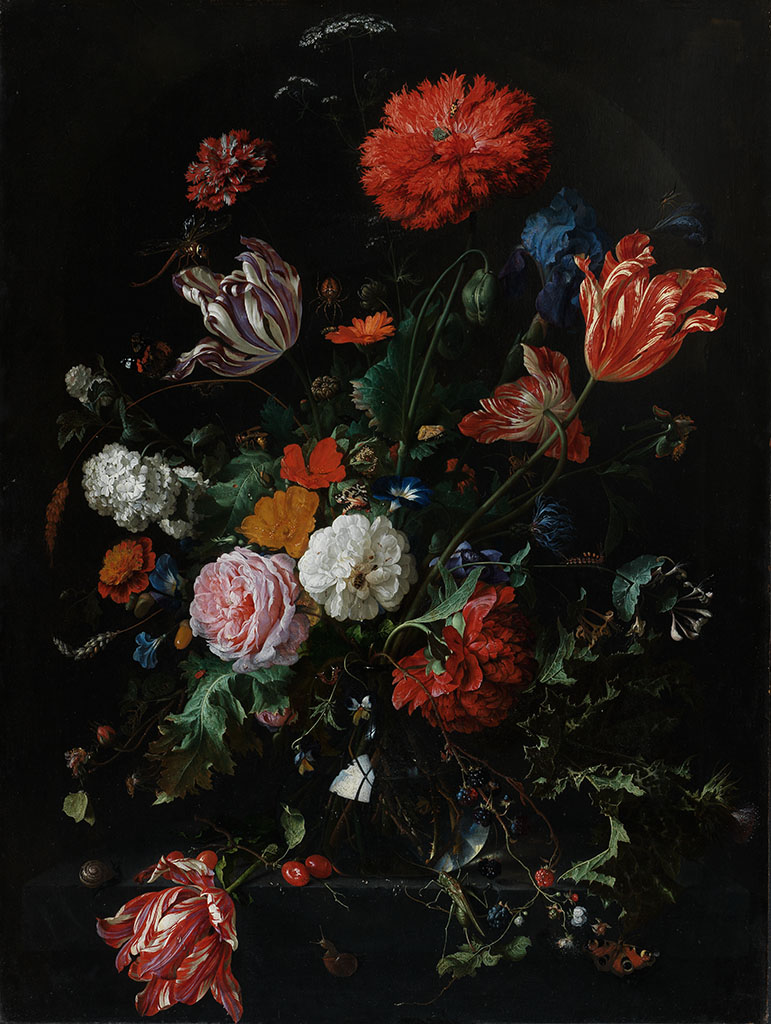
The tulip in the top left of the painting, for instance, is almost impressionistic in its treatment, compared to the work of the later Dutch master Jan Davidsz. de Heem [1487], who studiously reproduces the pattern and structure of each petal.
There is a coherence and smoothness in Brueghel's work that explains the artist’s contemporary nickname: ‘velvet Brueghel'. Even the relatively humble looking stoneware vase here has a glow and texture that warrants its place between the blooms and jewels.
Themes and periods
Data from our collections database
Sotheby's, 1948, bought by donor (but see Lord Fairhaven's annotated Grant, appears to be Christie's 13 May 1948, lot 104)
Legal notes
Bequeathed 1973, received 1975
Acquisition and important dates
- Method of acquisition: Bequeathed
- Dates: 1975
Dating
Maker(s)
- Brueghel, Jan, the elder Painter
Materials used in production
Read more about this recordStories, Contexts and Themes
Other highlight objects you might like
Suggested Curating Cambridge products
Sign up to our emails
Be the first to hear about our news, exhibitions, events and more…
